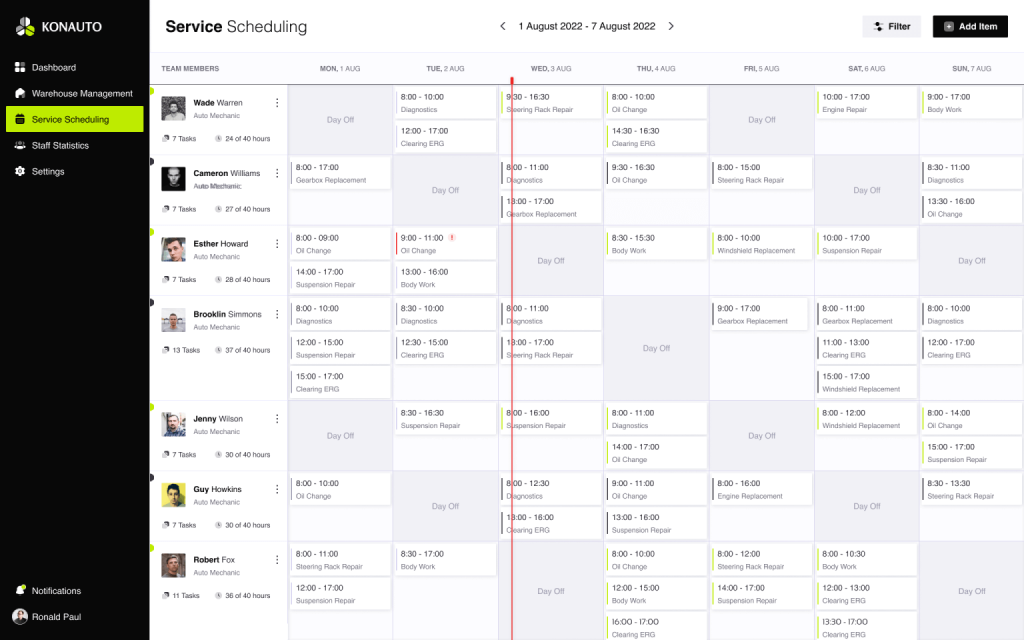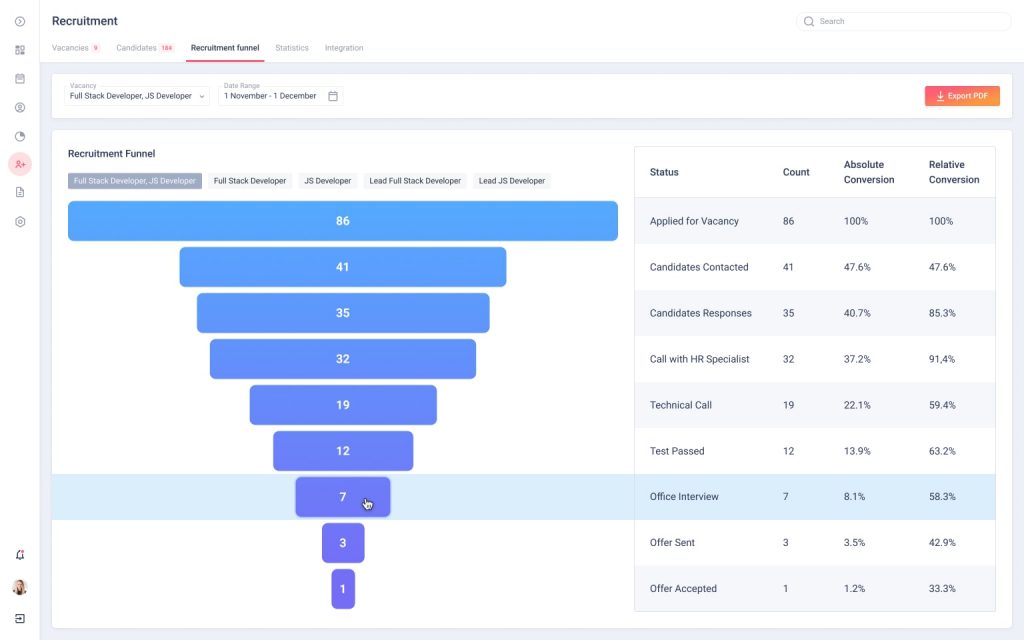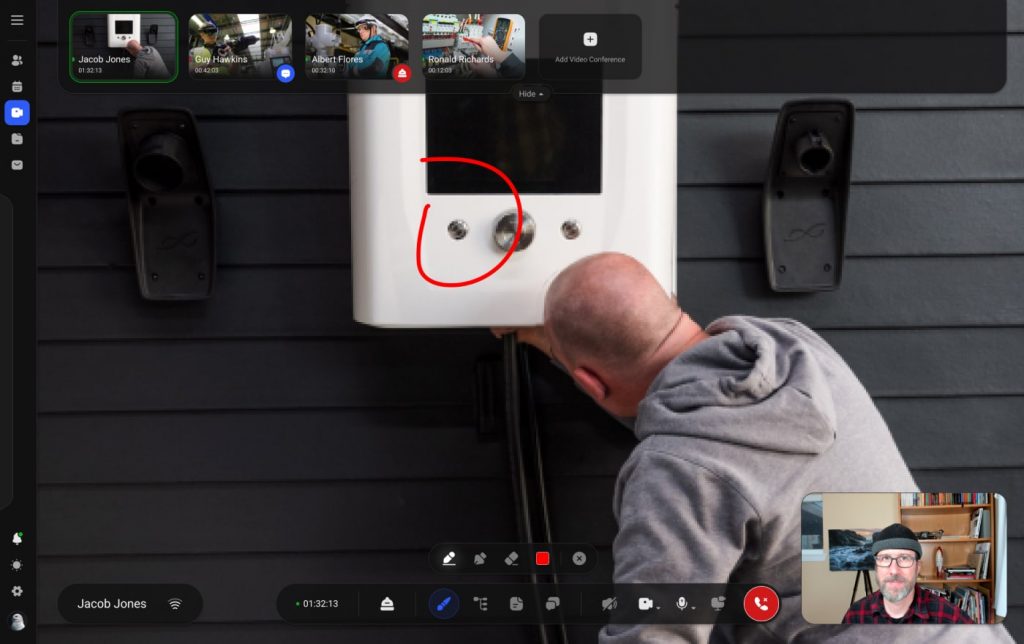The maritime industry is a complex and dynamic sector, where the margin between success and failure is often measured in fractions of a degree. Effective management is the linchpin that holds everything together, and the right software can make all the difference. However, the unique demands of the maritime industry mean that off-the-shelf solutions often fall short. That’s why custom-built marine fleet management software is becoming increasingly popular, offering targeted modules that cater to the specific needs of shipping and logistics companies.
In this article, we’ll delve into the essential modules that make up a comprehensive marine fleet management software system, and explore how they can help shipping companies overcome the challenges of the maritime industry.
The Place of Fleet Management Software in the Maritime Industry
The maritime sector is significant in terms of both economic impact and employment. It generates billions in revenue annually and employs millions worldwide, from seafarers to port workers and logistics personnel. It’s a cornerstone of the global economy, responsible for transporting approximately 90% of international trade by volume. This sector generates significant economic activity, contributing around $380 billion annually through freight rates alone, reflecting its essential role in facilitating trade. Furthermore, the rise in e-commerce has led to increased demand for efficient shipping solutions, further underscoring the industry’s importance.
Despite its size and significance, the maritime industry faces numerous challenges, such as:
- Environmental Regulations. Stricter regulations aimed at reducing emissions and improving sustainability are pushing companies to adopt greener technologies and practices;
- Operational Efficiency. Managing a fleet involves complex logistics, compliance with international laws, and real-time data management. Many companies still rely on outdated software that hinder efficiency;
- Cost Management. Fluctuating fuel prices, maintenance costs, and labor expenses pose ongoing financial challenges for fleet operators;
- Crew Shortages. The industry is grappling with a shortage of skilled labor, which threatens operational capabilities and service quality.
Read Also 7 Business Process Management (BPM) Trends You Should Start Using Today
Fleet management software is designed to assist shipping and logistics companies in managing and monitoring their ships, crew members, and resources, which is crucial for maritime businesses. Within the maritime sector, effective management requires tracking multiple facets of ship operations, from maintenance and procurement to crew coordination.
A well-integrated marine software provides real-time monitoring, predictive maintenance capabilities, and comprehensive resource tracking. It helps to deal with everything from routine ship maintenance planning to the management of unanticipated repairs. Many modern marine software tools are designed to integrate with GPS tracking, inventory control, and business intelligence tools. It allows creating a unified hub for data collection and strategic decision-making.
The modular structure of modern web applications enables due flexibility. It allows shipping companies to build the marine software that corresponds to their current needs or integrate a functional module into the system they already have to expand its functionality at lower costs. Let’s take a look at the functional blocks or systems you’ll need to develop your ideal marine fleet management software.
Planned Maintenance System (PMS)
The Planned Maintenance System ensures the ongoing upkeep of ships. It prevents unexpected breakdowns and minimizes operational interruptions. This marine software module facilitates the regular maintenance of ship systems while ensuring adherence to regulatory requirements. Automating maintenance schedules reduces manual efforts and helps maintain ships in optimal working order.
Core Features
Scheduled Inspections and Repairs. With PMS, companies can easily develop regular scheduling of inspections, repairs, and replacements of ship components. It ensures that maintenance tasks are performed timely, reducing the risk of equipment failure.

Source: A System for Efficient Car Service Scheduling and Warehouse Management
Regulatory Compliance. Marine software ensures adherence to industry regulations by maintaining detailed records of all activities. This compliance helps avoid fines and ensures the vessel’s operational legitimacy.
Centralized Data Access. Centralized storage and management of maintenance records makes it easier to track the history of ship inspections, repairs, and spare parts replacements. Integration with Inventory Management software ensures that necessary spare parts and materials are available when needed.
Key Benefits:
- Improved Ship Safety. Regular maintenance ensures that all ship components are functioning correctly, which significantly enhances the safety of the ship and its crew members;
- Cost Efficiency. Regular maintenance helps avoid major breakdowns that can be very costly for the company;
- Environmental Compliance. Ensuring that the ship’s systems are well-maintained enables meeting environmental regulations by reducing the vessel’s ecological footprint.
Shipping Procurement
Shipping procurement involves managing logistics, handling vendor relationships, and ensuring a reliable flow of parts and resources. This part of marine management software manages purchase orders, inventory levels, and vendor contracts, optimizing supply chains to enhance operational efficiency.
Core Features
Requisition Management software allows for the creation and processing of requisitions from onboard vessels, ensuring that all necessary items are requested on time.
Quotation and Supplier Management. Shipping procurement software facilitates the management of supplier quotations, enabling managers to compare prices and select the most cost-effective options available at the market. It also helps in maintaining supplier relationships and assessing their performance.
Purchase Order Processing. Once a supplier is selected, the marine software generates purchase orders and tracks their progress through to delivery, ensuring that all procurement activities are documented and traceable. Artificial intelligence can predict future demand and place orders when needed or notify the team.
Read Also: Technology Indistinguishable from Magic. What Decision Makers Should Know about Generative AI
Key Benefits:
- Improved Efficiency. The software optimizes the overall procurement cycle and reduces the time and effort required to manage it manually;
- Integration with Inventory Management Software ensures that stock levels are monitored and maintained, preventing shortages and reducing the need for emergency purchases.
Ship Safety Management Systems (QHSE)
The Quality, Health, Safety, and Environment or QHSE module allows for fostering a safe and compliant work environment. This marine software oversees safety protocols, regulatory adherence, and risk management, enabling fleets to meet international safety standards. By systematically managing hazards, conducting training, and tracking incidents, the QHSE software ensures that ships operate safely.
Core Features
Compliance With Safety Regulations. QHSE systems help ships comply with a myriad of regulations, including ISM (International Safety Management), ISPS (International Ship and Port Facility Security), and SOLAS (Safety of Life at Sea). Incident and Accident Management allows identifying root causes of potentially dangerous incidents and implementing corrective actions to prevent future occurrences.
Audit and Inspection Management. Companies can schedule, conduct, and follow up on audits and inspections with ease. It ensures that all checks are performed regularly and any issues are promptly addressed.
Key Benefits:
- Enhanced Crew Safety. By systematically managing safety protocols and procedures, QHSE software significantly enhances the safety of the ship and its crew. Regular drills, meetings, and training sessions can be scheduled and documented, ensuring that all crew members are prepared for emergencies.
- Operational Efficiency. The automation of safety and compliance tasks reduces the administrative burden on the crew, allowing them to focus on their core responsibilities;
- Environmental Protection. QHSE software helps ships adhere to environmental regulations, minimizing their ecological footprint. This includes managing waste disposal, emissions, and other environmental impacts.
Crew Management System
Efficient crew management is vital in marine operations, given the challenges of tracking certifications, work schedules, and overall crew welfare. This module organizes personnel assignments, monitors certification status, and ensures the availability of qualified crew members.
Core Features
Recruitment and Onboarding. This module for the marine software solution facilitates the recruitment process by managing job postings, applications, and candidate evaluations. It also simplifies the onboarding process, ensuring that new hires are quickly integrated into the crew.

Source: Human Resources Information System
Training and Certification Management. Marine software tracks the training and certification status of all crew members, ensuring that they meet the necessary standards and are up-to-date with their qualifications. Automated reminders help schedule mandatory training sessions and renewals.
Crew Scheduling and Planning. CMS allows for efficient crew scheduling, taking into account factors such as availability, qualifications, and regulatory requirements. This ensures optimal crew deployment and minimizes scheduling conflicts. Payroll and Compensation tools automate payroll calculations based on predefined rules, ensuring accurate and timely payments. It also manages other compensation-related tasks, such as allowances and bonuses.
Key Benefits:
- Enhanced Team Efficiency. By automating administrative tasks, CMS reduces the workload on HR personnel, which leads to improved operational efficiency and reduced administrative costs;
- Improved Crew Welfare. By managing crew schedules and ensuring timely payments, CMS contributes to better crew welfare and job satisfaction. This, in turn, can lead to higher retention rates and a more motivated workforce.
Read Also Embracing Continuing Professional Development (CPD) in the Digital Age by Different Industries
Hull Integrity Management
The hull integrity module offers tools for monitoring the structural condition of a vessel’s hull. Through inspections, repair tracking, and data analysis, this marine software helps prevent structural issues that could threaten vessel safety. By integrating with maintenance schedules, it ensures timely repairs and inspections are conducted.
Core Features
Inspection and Monitoring. Marine software tools enable regular inspections and continuous monitoring of the hull’s condition. This includes assessing coating conditions and identifying cracks, deformations, corrosion, and other structural anomalies.
Data Integration and Analysis. Hull Integrity Management software integrates data from various sources, including ultrasonic thickness measurements and visual inspections. This data provides a comprehensive understanding of the hull’s condition. 3D Visualization of the ship allows detailed assessment of the hull’s condition. This feature helps in pinpointing specific areas that require attention.
Maintenance Planning. Based on the inspection data, the system helps in planning maintenance activities, including repairs and dry-docking. This proactive approach ensures that potential issues are addressed before they escalate into major problems.
Key Benefits:
- Enhanced Safety of ships and crew achieved by identifying and addressing structural issues early;
- Cost Efficiency. Optimized ship maintenance schedules and reduced frequency of unplanned repairs lead to cost savings in terms of both maintenance expenses and operational downtime;
- Regulatory Compliance. Marine management software provides access to records of inspections and maintenance activities during audits and inspections.
Dry-Docking and Ship Repair
The dry-docking module is instrumental in planning, scheduling, and managing significant repairs or inspections that necessitate ships being temporarily taken out of service. This module monitors upcoming maintenance needs, coordinates repair schedules, and manages the associated budgets, helping to minimize downtime.
Core Features
Planning and Scheduling. Marine fleet management software helps with planning and scheduling of dry-docking activities. It includes coordinating with shipyards, arranging for necessary materials and services, and ensuring that all tasks are completed within the allocated time frame.
Tender Management. The marine software supports the management of tenders from shipyards and suppliers, allowing fleet managers to compare bids and select the most cost-effective and reliable options.
Real-Time Repair Monitoring. Many platforms offer real-time monitoring and reporting capabilities, allowing fleet managers to track the progress of dry-docking and repair activities remotely. This ensures that any issues can be promptly addressed, and the project stays on schedule.

Source: Remote Presence Solution
Key Benefits:
- Cost Control. By optimizing the planning and execution of dry-docking and repairs, marine software tools help in controlling costs. It minimizes the risk of unexpected expenses and ensures that all activities are completed within budget.
- Time Efficiency. The software streamlines the entire dry-docking process, reducing the time ships spend out of service. It ensures that ships return to operation as quickly as possible, minimizing downtime and maximizing operational efficiency.
Shipping Data Analytics (Business Intelligence)
The analytics module harnesses data across all operations to provide insights into performance metrics, cost analysis, and operational trends. By collecting information on fuel usage, maintenance expenses, and route efficiency, this module enables fleet managers to make informed decisions that drive long-term profitability.
Core Features
Data Collection and Integration. BI (Business Intelligence) software collects data from various sources, including sensors on ships, weather reports, market trends, and operational logs. This data is integrated into a centralized platform, providing a comprehensive view of fleet operations.
Performance Monitoring. Marine software continuously monitors key performance indicators (KPIs), such as fuel consumption, voyage efficiency, and maintenance schedules. This real-time monitoring helps in identifying inefficiencies and areas for improvement.
Predictive Analytics. By analyzing historical data, BI software can predict future trends and potential issues. This includes forecasting maintenance needs, optimizing routes, and anticipating market changes, allowing for proactive decision-making.
Customizable Dashboard. Modern BI solutions offer customizable dashboards that allow users to focus on the metrics most relevant to their operations. This personalization ensures that fleet managers have quick access to the information they need.
Real-Time Alerts. The marine software can generate real-time alerts for critical issues, such as deviations from planned routes or unexpected equipment failures. This enables prompt responses to potential problems, minimizing downtime and operational disruptions.
![]()
Source: Traccar-Based GPS Tracking System
Key Benefits:
- Enhanced Decision-Making. BI systems provide actionable insights through detailed reports and dashboards. Fleet managers can make informed decisions based on accurate, up-to-date information, improving overall operational efficiency.
- Cost Reduction. By identifying inefficiencies and optimizing operations, shipping data analytics helps in reducing operational costs. This includes minimizing fuel consumption, optimizing maintenance schedules, and improving voyage planning.
- Improved Safety and Compliance. Data analytics helps in monitoring compliance with safety and environmental regulations. It ensures that all operations are conducted within legal frameworks, reducing the risk of fines and enhancing the safety of the vessel and crew.
Read Also Fleet Management System. How Keep Your Business Up And Running Without Draining Your Budget
Conclusions
Marine fleet management systems allow the incorporation of essential modules so that companies can enhance operational efficiency, reduce costs, and improve safety and compliance. These modules work together to provide a unified platform for data collection and strategic decision-making, enabling fleet managers to make informed decisions that drive long-term profitability. By investing in a custom-built marine fleet management system, shipping companies can stay ahead of the competition and thrive in an increasingly complex and dynamic industry.
Contact us if you want to adopt a custom-made fleet management software solution. We’ll be happy to discuss your project.